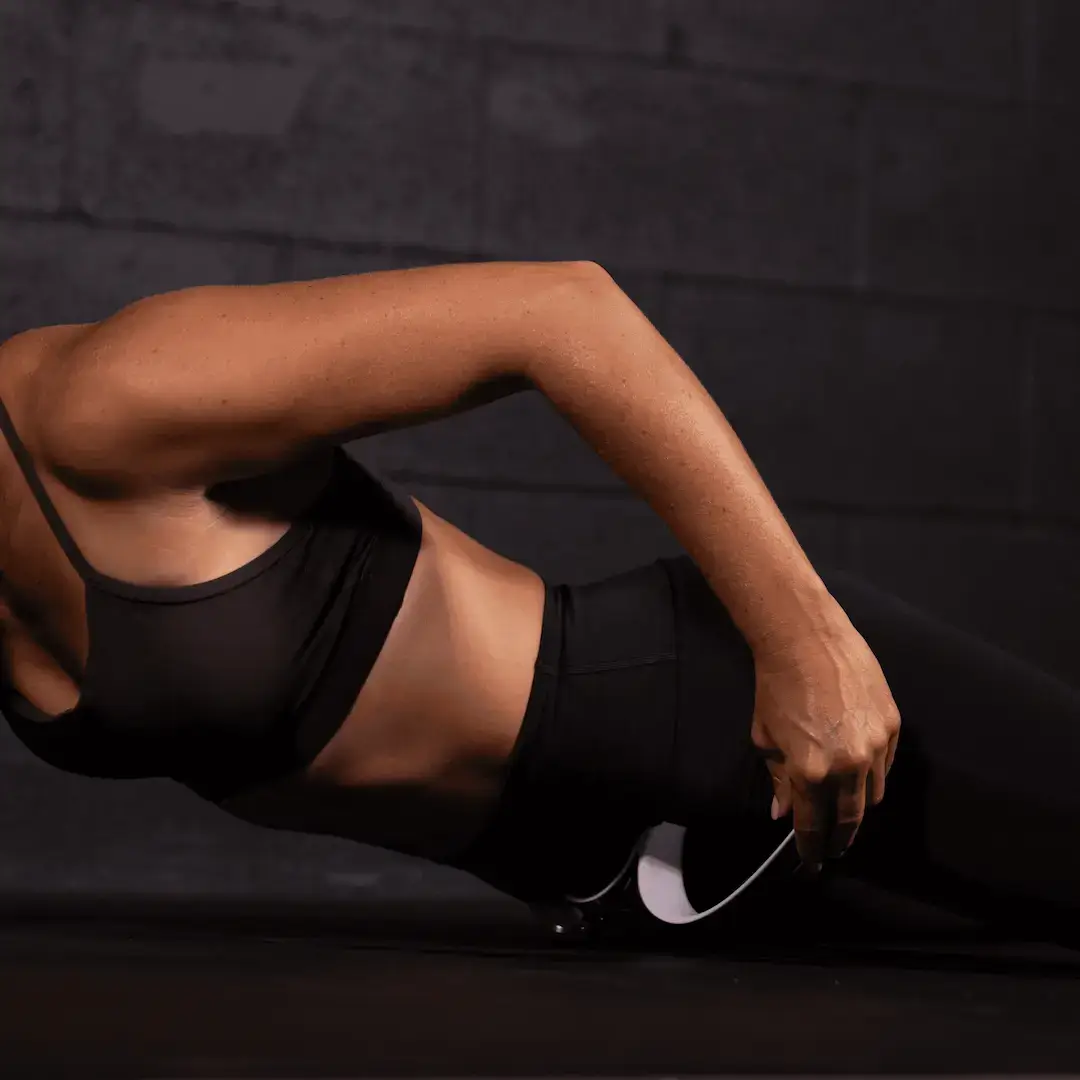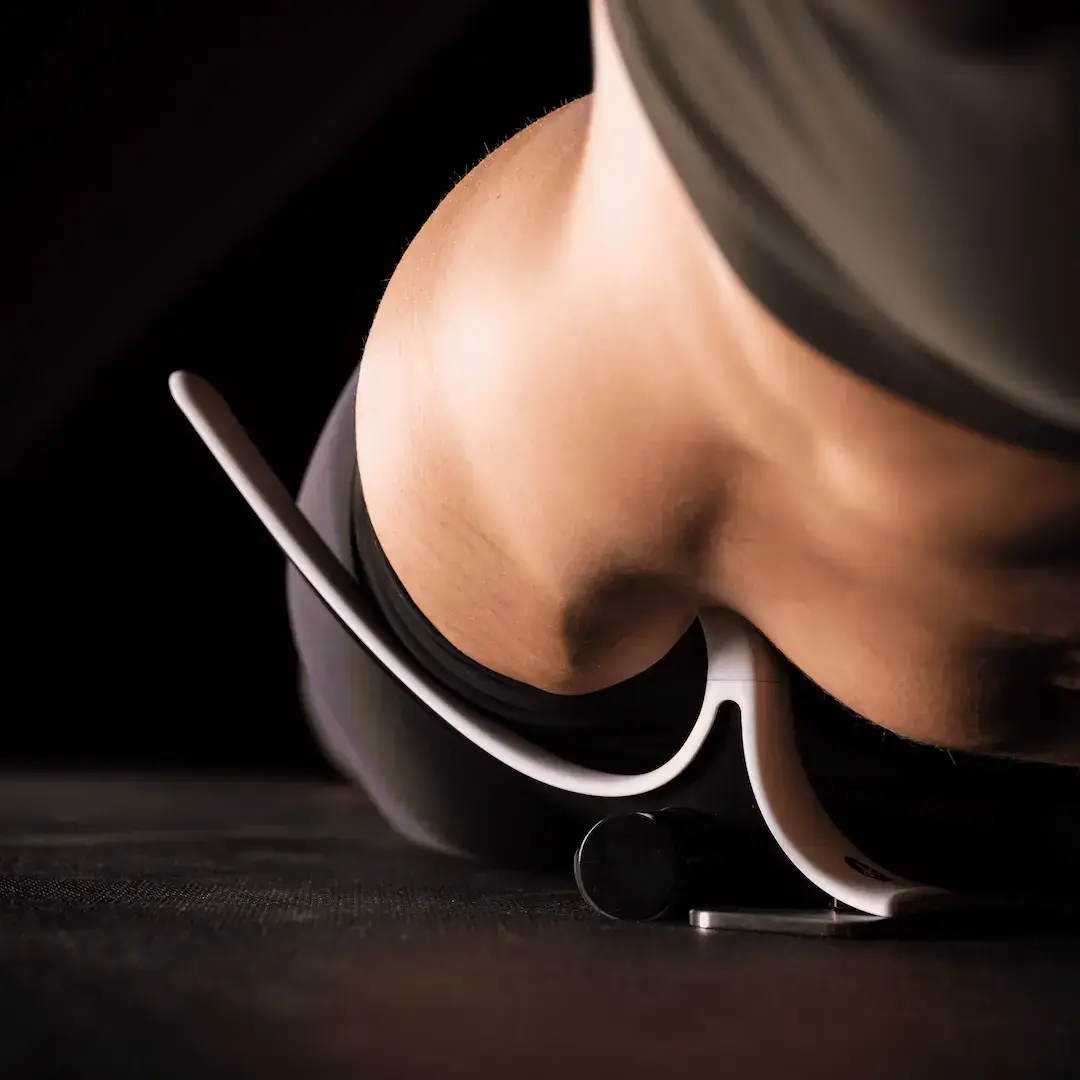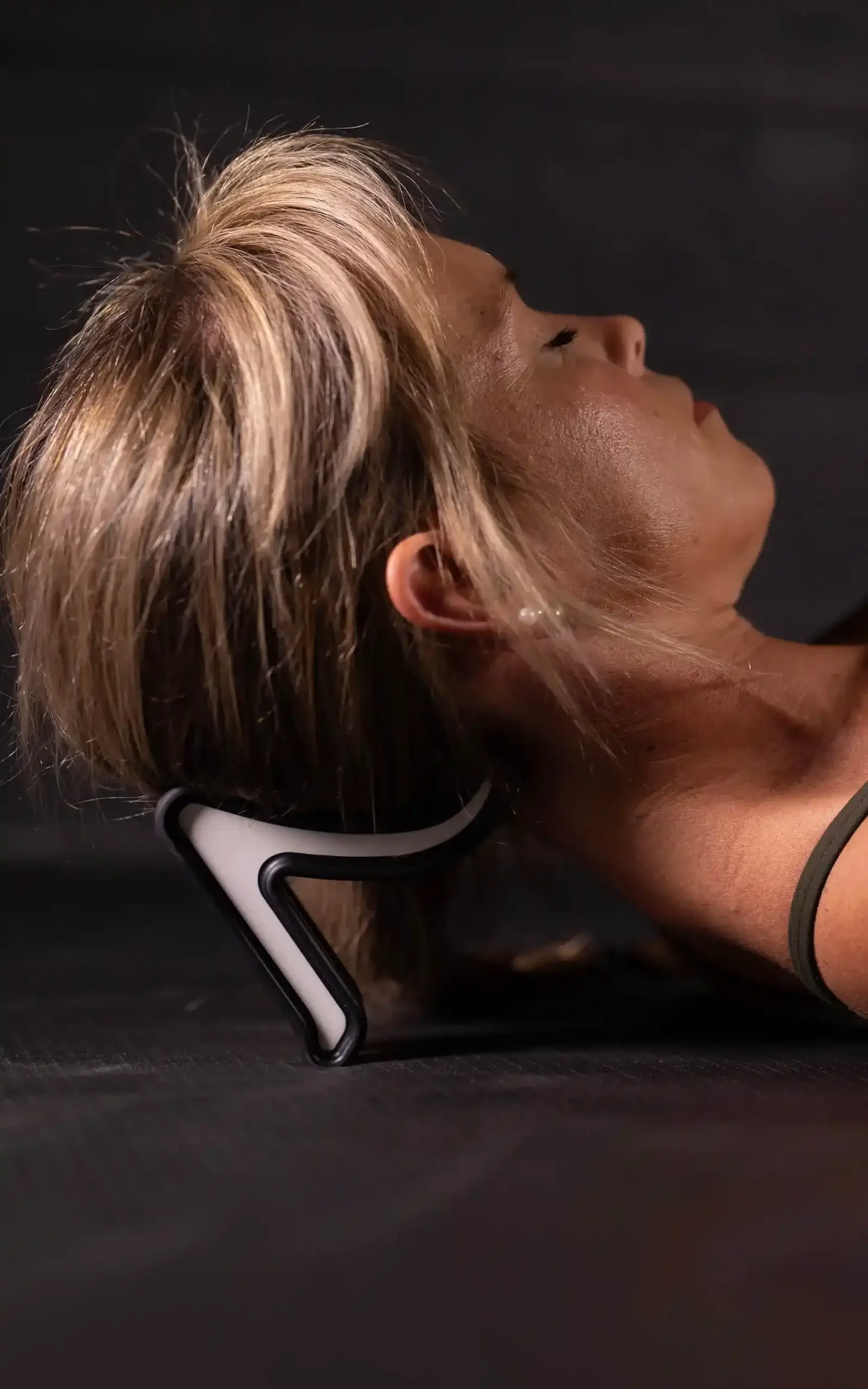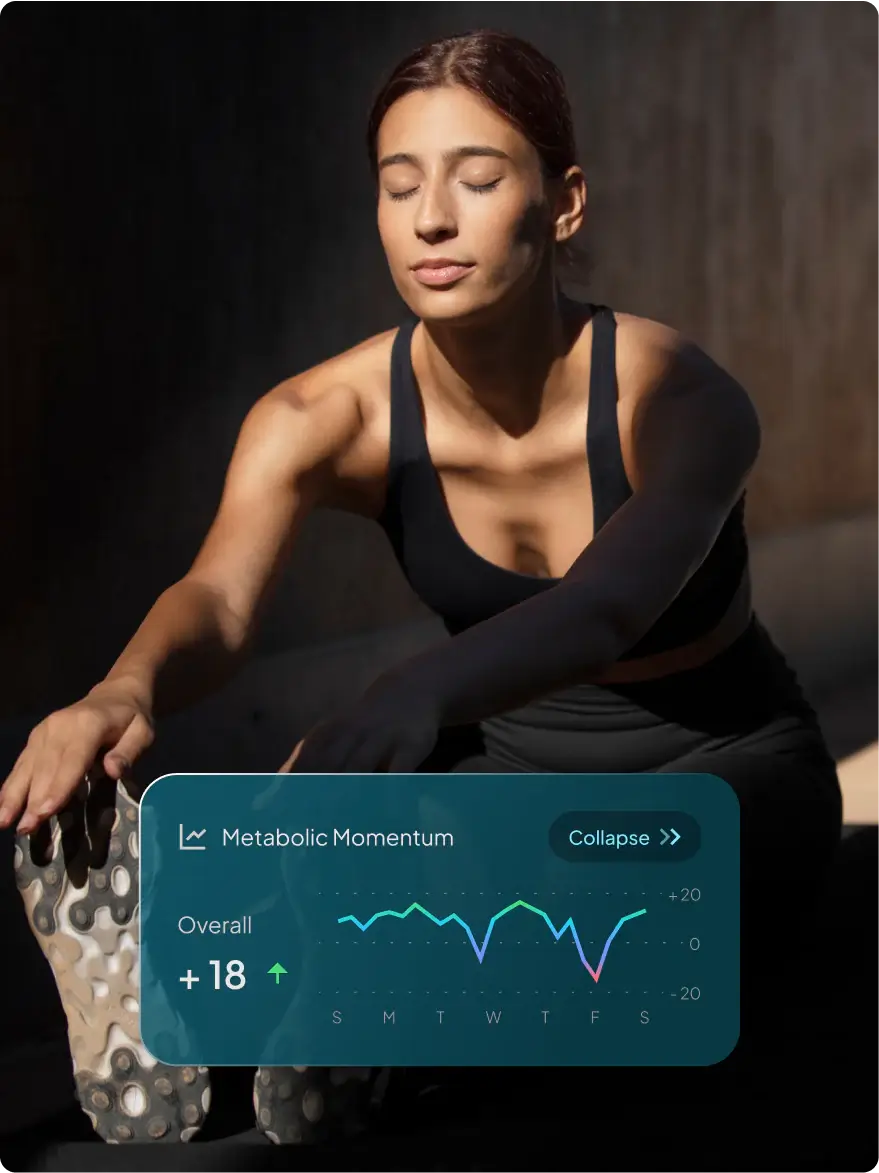Take Up To 10% Off Aletha Orders
×10% Off Aletha Sitewide
×In the age of remote work, endless Zoom meetings, and long hours behind a screen, one thing is clear: our bodies weren’t built for this.
Human beings evolved for motion—yet today, we sit more than we move. Whether it’s the nine-to-five grind or doom-scrolling at midnight, the modern lifestyle has shifted us into a state of near-constant physical stillness. And it’s taking a toll.
Sure, there are countless stretches and strengthening exercises recommended for desk-bound aches. But the truth is, those only go so far. Deep, chronic muscle tension and misalignment—especially in hard-to-reach areas like the hip flexors and suboccipital muscles—require precise, focused intervention that typical stretches and workouts miss.
While medical interventions like painkillers, injections, or even surgery are often presented as first-line responses, Aletha is flipping that script, offering powerful, non-invasive tools that directly address the root of our postural pain—before it spirals into chronic dysfunction.
Why Desk Jobs Are Rewriting Our Pain Map
Static posture isn’t just a minor inconvenience—it’s a full-body stressor. Let’s break down what’s really happening when we spend hours in a seated position:
Tight Hips, Twisted Core: The Silent Chain Reaction

When you sit for extended periods—working, commuting, relaxing—your hip flexors stay shortened, particularly the iliacus and psoas. These aren’t superficial muscles; they’re buried deep in the core, connecting your lumbar spine to your legs. They’re also absolutely critical to maintaining posture and pelvic alignment.
What happens when they stay tight:
- Your pelvis tilts forward, which misaligns your entire spine
- Your low back compresses, creating stiffness and eventual pain
- Your core muscles become imbalanced, disrupting natural rotation
- Your hips lose mobility, making standing, walking, or running harder over time
This postural misalignment is subtle—until it’s not. By the time most people feel discomfort, the core is already “twisted,” the hips are locked, and the spine is compensating.
This is what physical therapist and Aletha founder Christine Koth identified as Tight Hip, Twisted Core Syndrome, outlined in her bestselling book of the same name. It’s not just a trendy diagnosis—it’s the underlying cause of countless cases of unexplained back pain, hip stiffness, and lower-body instability.
Warning signs:
- A tightness you can’t stretch away
- Low back pain that returns after sitting
- Discomfort standing for long periods
- Pelvic misalignment or hip clicking
- Knee and foot pain from improper leg tracking
The worst part? Most of us don’t recognize the signs until the only option seems to be pain management, not prevention. Aletha’s tools step in before it reaches that point—targeting the deep muscle tension others can’t reach, realigning the core from the inside out.
Neck & Shoulder Strain: The Price of the Forward Head
Think of your head like a bowling ball balanced on a toothpick. That’s the structure your neck supports—and the more forward your head leans, the heavier that bowling ball becomes.
The numbers don’t lie:
- A neutral head weighs ~12 lbs
- At 15° forward, that’s 27 lbs of force
- At 30°, it becomes 40 lbs
- At 60°, your neck endures a shocking 60 lbs
This isn’t just theoretical. This load puts enormous stress on your cervical spine, suboccipitals, trapezius, and levator scapulae—creating a cascade of problems that don’t start with pain but end with it.
The common outcomes:
- Chronic tension headaches
- Jaw pain and clenching (often misdiagnosed as dental issues)
- Stiff shoulders and upper back
- Numbness or tingling down the arms
- Eye strain and even dizziness
We call it “tech neck,” but that minimizes a real musculoskeletal imbalance. Most people push through with ibuprofen and ice packs—missing the opportunity to correct it at the source.
Aletha’s Range tool is designed specifically for this purpose. It targets the base of the skull where the micro-muscles responsible for head alignment live. By releasing these suboccipitals, you’re not just relieving tension—you’re restoring your head’s rightful position above your spine.
Aletha’s Answer: Tools That Target the Root
Aletha’s products aren’t general-purpose gadgets. Each is designed with clinical precision to address a specific kind of pain—the kind that most tools can’t reach.
Here’s how they work:
Mark (The Original Hip Hook™)


Targets:
The iliacus and psoas—two deep hip flexors responsible for pelvic and spinal alignment.
Why it matters:
Traditional stretching, foam rolling, or massage therapy can’t effectively access these deep muscles. Mark is the first tool engineered to release the iliacus—where true hip mobility begins.
How it works:
- Use lying down to apply precise pressure
- Rotate to engage deep muscle release
- Designed to mimic a physical therapist’s precision
Benefits:
Restored posture, reduced back pain, hip flexibility, and relief from foot, knee, or pelvic issues caused by misalignment.
Range (Formerly The Nuckle)



Targets:
Suboccipitals at the base of the skull, along with upper neck and jaw tension.
Why it matters:
These small but powerful muscles bear the brunt of modern screen time. When tense, they compress nerves, restrict motion, and radiate pain across the head and face.
How it works:
- Dual-point contact mimics a therapist’s knuckles
- Releases pressure using your body’s weight
- Small, portable, and perfect for end-of-day decompression
Benefits:
Reduced headaches, neck stiffness, TMJ discomfort, and improved head alignment.
Orbit
Targets:
Glutes, piriformis, and outer hip fascia—often missed by larger tools.
Why it matters:
The piriformis can trap the sciatic nerve when tight, while weak or stiff outer glutes destabilize your entire lower body.
How it works:
- Ergonomic shape fits hip contours
- Firm enough for deep release, but safe for sensitive areas
- Easy to use standing, seated, or lying down
Benefits:
Better hip mobility, improved walking and running mechanics, and long-term relief from sciatic symptoms.
Band

Targets:
Glute medius and minimus—critical for stabilizing hips and knees.
Why it matters:
Sitting weakens these muscles, leading to instability, improper movement patterns, and strain in the lower body.
How it works:
- Medium-resistance band for activation exercises
- Pairs perfectly with Aletha’s release tools for a full routine
- Strengthens weak links left behind by modern inactivity
Benefits:
More powerful glutes, proper lower body alignment, and pain prevention through balanced movement.
From Knowledge to Relief: Aletha Empowers You to Move Better, Sooner
Aletha isn’t just about tools—it’s about transformation.
With every product comes access to an ecosystem of step-by-step videos, in-depth blogs, and the bestselling book Tight Hip, Twisted Core by physical therapist Christine Koth. This isn’t surface-level guidance—it’s real, actionable education that helps you understand your pain, correct your posture, and prevent issues before they become chronic.
In a healthcare landscape where prescriptions often come before posture checks, Aletha offers a new path: one rooted in prevention, not procedures. One that gives you the tools and the knowledge to become the expert on your own body.
No gimmicks. No guesswork. Just clinical-grade, self-directed solutions designed for how we really live—sitting more, moving less, and needing relief that actually lasts.
Perks that Move with You:
- ✔️ Free U.S. shipping on orders over $75
- ✔️ 60-day money-back guarantee on Mark and Range
- ✔️ FSA/HSA eligible
Don’t wait until pain forces your hand. Reclaim your posture, mobility, and daily comfort—before it’s gone.
🔗 Explore Aletha Health
Take Up To 10% Off Aletha Orders
×10% Off Aletha Sitewide
×How useful was this post?
Click on a star to rate it!
Average rating 0 / 5. Vote count: 0
No votes so far! Be the first to rate this post.




